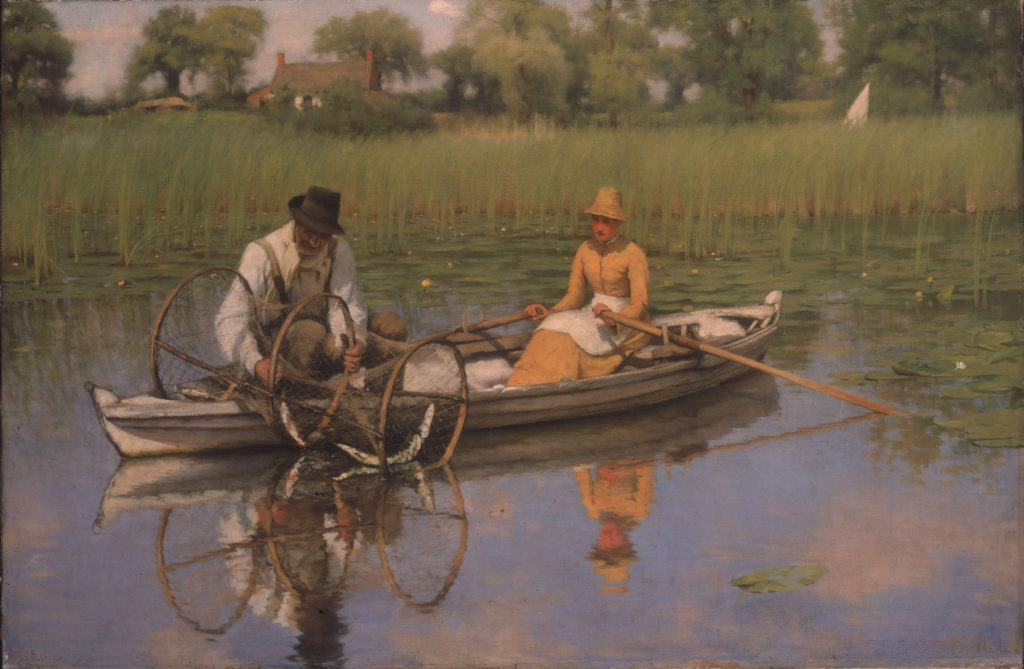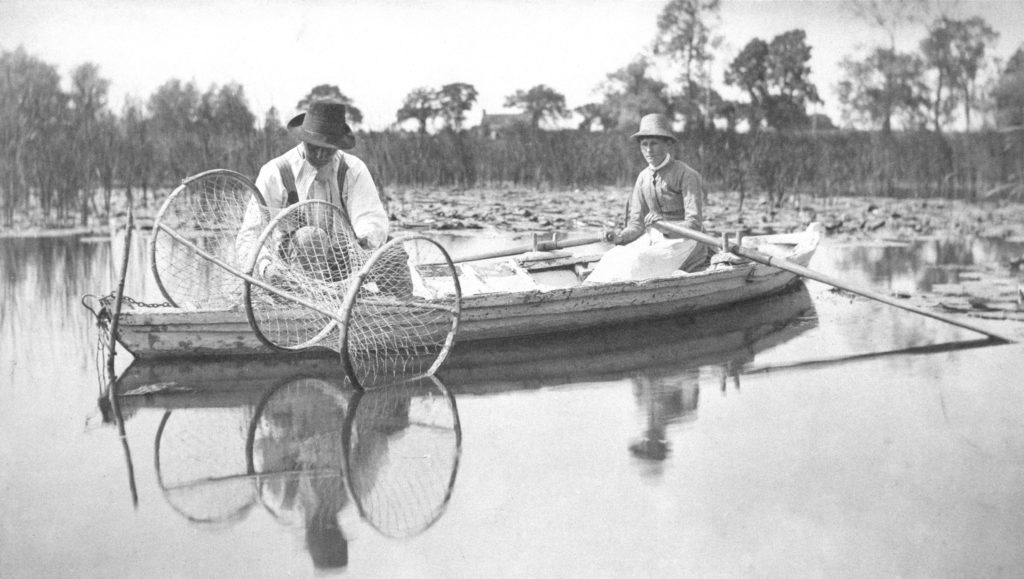There is a scene in Evelyn Waugh’s Brideshead Revisited in which the odious Boy Mulcaster interrogates Charles Ryder, painter and protagonist, as to why he paints pictures. Why, Mulcaster asks, doesn’t Charles simply go out and buy a camera? Charles replies: ‘a camera is a mechanical device which records a moment in time, but not what that moment means or the emotions that it evokes […] whereas, a painting, however imperfect it may be, is an expression of feeling, an expression of love: not just a copy of something.’ This juxtaposition might be said to persist today: we feel that paintings are fictive, imperfect impressions, whereas the camera documents, and never lies. Meghan Trainor’s recent dispute with her record label over their forcible Photoshopping of her image might be related to this distinction: we expect a photograph to be a truthful representation of a subject, and thus can be misled by airbrush and digital rubber in a way we would not be by paintbrush and graphite.
One of the many triumphs of the exhibition ‘Painting With Light’ is that it clearly tells the story of the early negotiation of this relationship between photography, painting, truth, and deception. Early photographs, from the Victorian and Edwardian era, are set alongside contemporaneous paintings. The curators have succeeded in capturing the complexities and symbioses of a developing relationship: rather than merely showing photographic techniques to have influenced paintings, we see seepages and imprints of influence in both directions. Like images in a darkroom, well-known paintings now loom into new focus as double-exposures, layered and tinted by their relationships with the photographic visual culture of their day. Intelligent pairings inform and permit the viewer to make formal comparisons that usually seem trivial and trite: to say that a sepia-washed landscape photograph is ‘Turner-esque’ gets close, we learn, to the terms in which it might have been conceived by its makers.

Dante Gabriel Rossetti, Beata Beatrix, c. 1864-70, Tate.
The truth-fiction dichotomy was, we discover, present right from the beginning. The Pre-Raphaelite quest for truth, which according to Ruskin demanded that the artist ‘reject nothing, select nothing’, led some artists to enshrine the dispassionate eye of the camera lens as the holy grail of faithful representation. Ruskin’s daguerreotypes of Venice palazzi are highlights of the early rooms, set opposite his drawings of the same façades, with crisp cornices emerging and retreating from the silvery mist of the print. Peach Robinson, who spliced two separate photographic plates together to create his haunting Lady of Shallot, felt the backlash of this association with ‘truth’, when he, like Megan Trainor’s record label, was castigated for deceiving his audience (as if a staged photograph of an Arthurian damsel was not deceitful enough). Ruskin was, of course, wrong to suggest that the camera does not select some elements and reject others: the process of framing a photograph is nothing if not a process of selection and rejection. And the association of photography with veracity was far from unanimous, even in the nineteenth century. Some of my favourite photographs were the costumed tableaux shot in village halls, faking historical, biblical and oriental scenes in front of photoreal backdrops, around which the clutter of real life leaks at the edges, breaking the illusion.
With a limited amount of wall-space, the curators’ task, like the photographer’s, is to select the important subjects, and reject the rest. It seems that Ruskin was wrong, in that this selection and rejection does not render the exhibition ‘untrue’. Rather, the curators have snapped an evocative and faithful portrait of the many and varied facets of the relationship between photography and painting. In the early rooms, we see photographs used as tools and aids, as preparatory studies for landscape paintings and monumental group portraits. Later, we see stereoscopic reproductions of popular paintings, and learn of the eruption of the first copyright cases around the issue of reproduction. We learn how photography was key in the diffusion of Japanese aesthetics in the West, and played a democratising role by making the British museum’s sculpture collection available nationwide, in photographic and stereoscopic reproduction. Photographic aesthetics are also shown to have been directly influenced by the idioms of painting: the camera, which tends to reproduce illusory space of the Renaissance type (recession to a vanishing point; a window into another world) could, by the use of patterned drapes and close cropping, mimic the flattened picture-plane of Pre-Raphaelite compositions. Similarly, the nocturnes of Whistler inspired photographers such as Alvin Langdon Coburn to produce bleeding tonal studies of watery reflections. The relationship is shown to have been thoroughly symbiotic.


The curation well disrupts the categories of instantaneous snap and crafted, painted picture, but at times I wanted a more detailed explanation of the processes that produced these early photographic images. A leaf at the back of the exhibition guide gives a short summary, but perhaps more could have been done to flesh out the nomenclature of daguerreotype and albumen print, considered faithful and mysterious, respectively, by Ruskin? What of the silky platinum print? The revolutionary autochromes? What differentiates glass plate negatives and coated printed papers? In stressing the comparison between painting and photograph, the blurring of subtle differences between different photographic techniques is perhaps a necessary compromise. Generally, however, the exhibition makes its specific comparisons between media very well, and clearly demonstrates the cross-fertilisation of aesthetic approaches.
This exhibition argues for a greater appreciation of an undervalued era of photography (I was struck, for example, by Gustave le Gray’s magisterial seascapes). But it also makes a serious proposal for more genuinely inter-disciplinary exhibitions, which mine across whole strata of visual culture to more faithfully recreate a ‘period eye’. Stereoscopy, for example, appears in this exhibition as a major phenomenon that would have played a large part in the contemporary notions of illusion, delusion, and realism for a nineteenth century viewer. Freed from their usual hanging alongside Old Master paintings, and set against contemporary photographs, the Pre-Raphaelite paintings seem more thoroughly modern than usual. And the photographs emerge not as subservient to paintings, but as wrought, intricately constructed, magical things. So Charles Ryder is proved wrong, and Mulcaster right: a photograph is not just a copy of something. In fact, this could hardly be further from the truth.
by Robert Hawkins
Painting With Light, Tate Britain, 11 May – 25 September 2016


You must be logged in to post a comment.